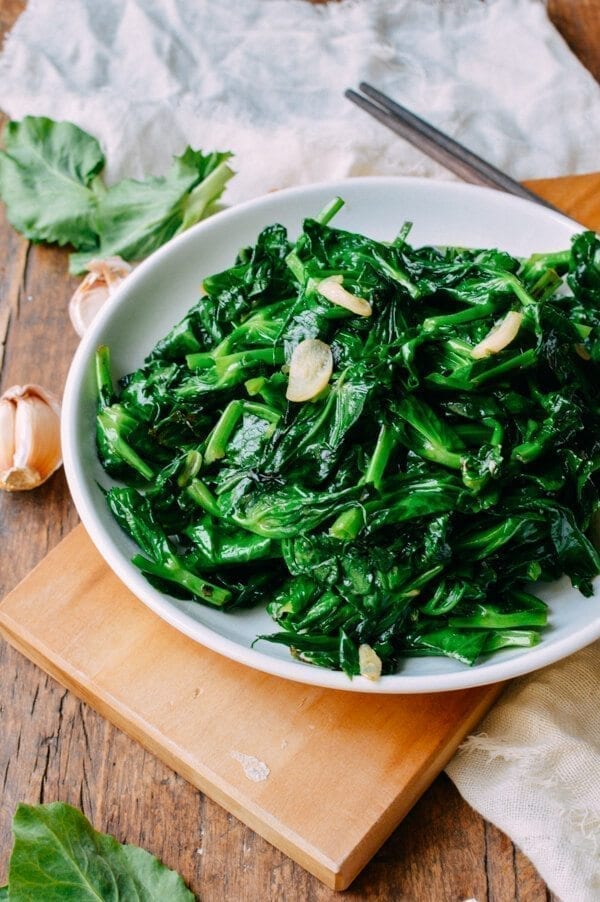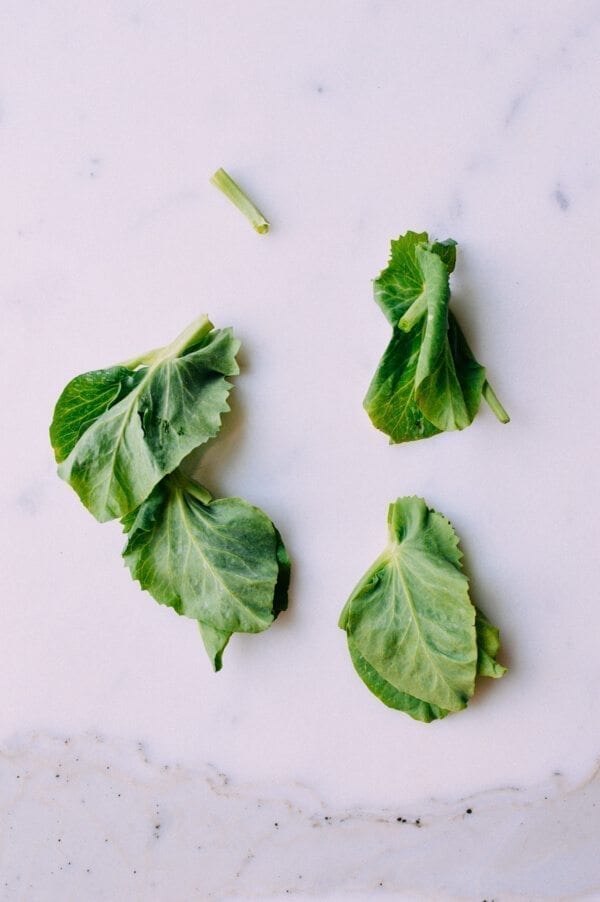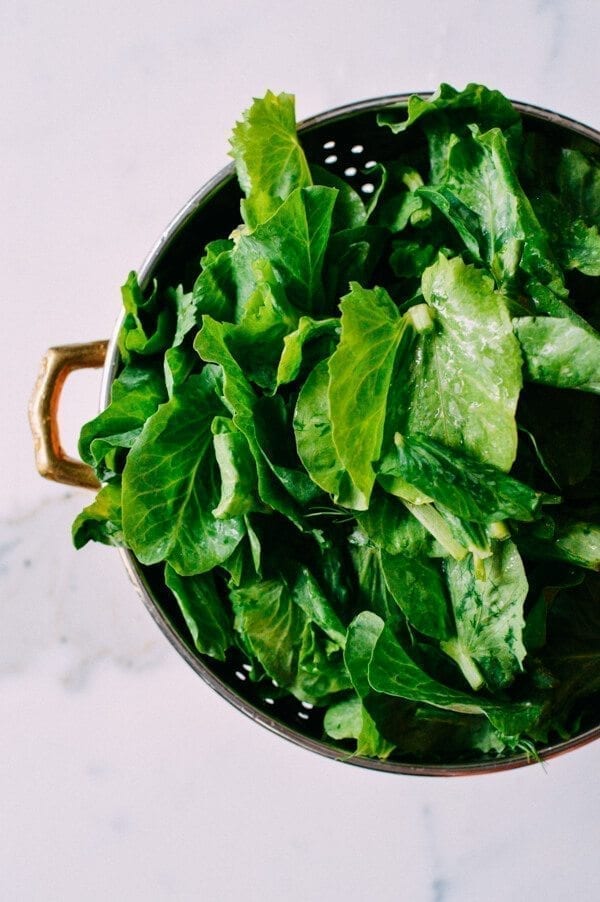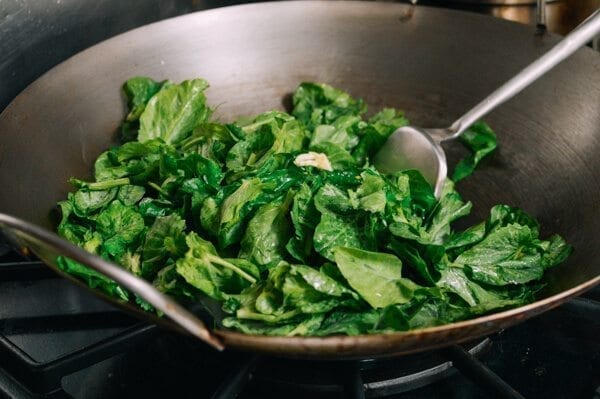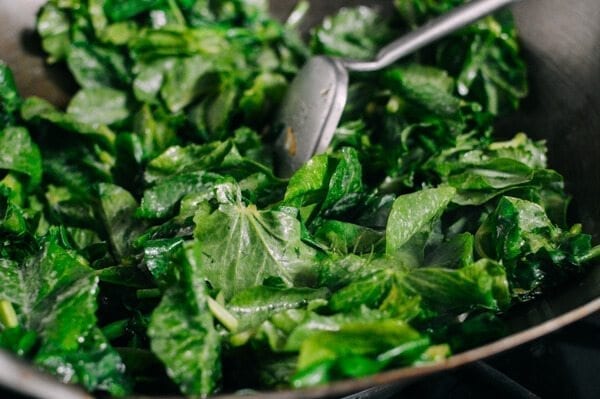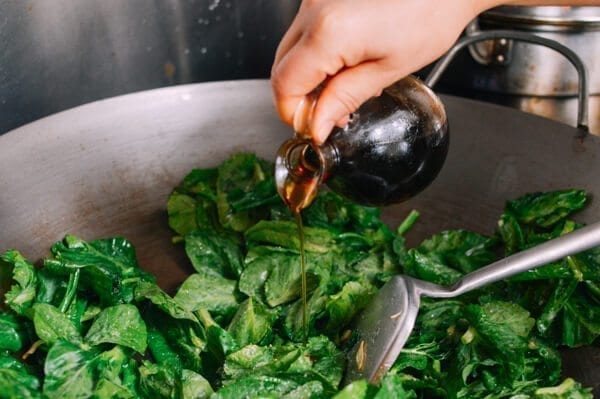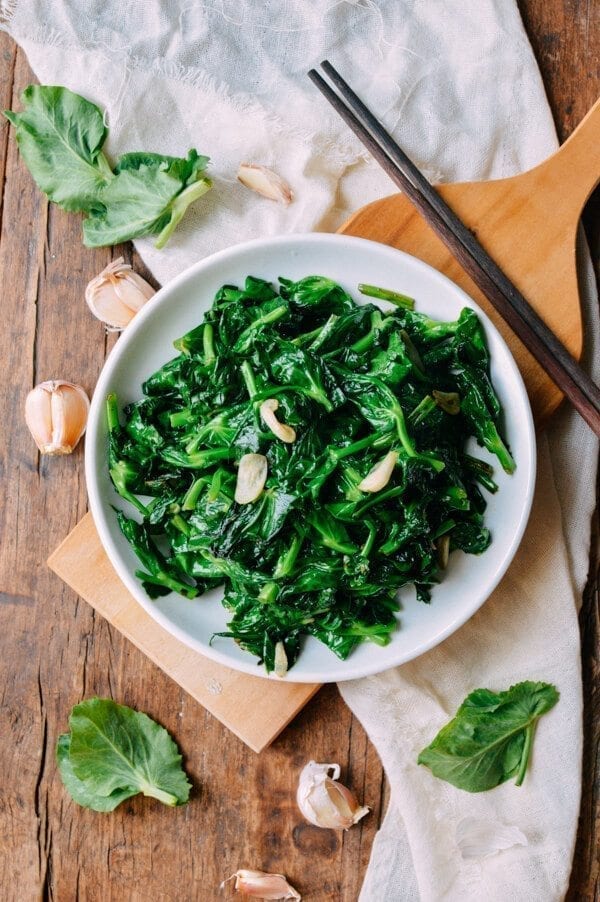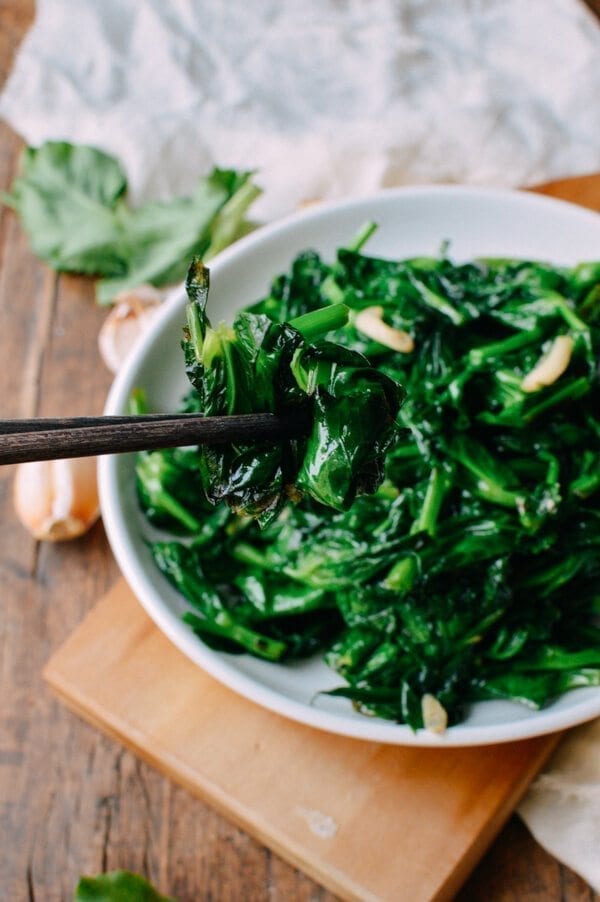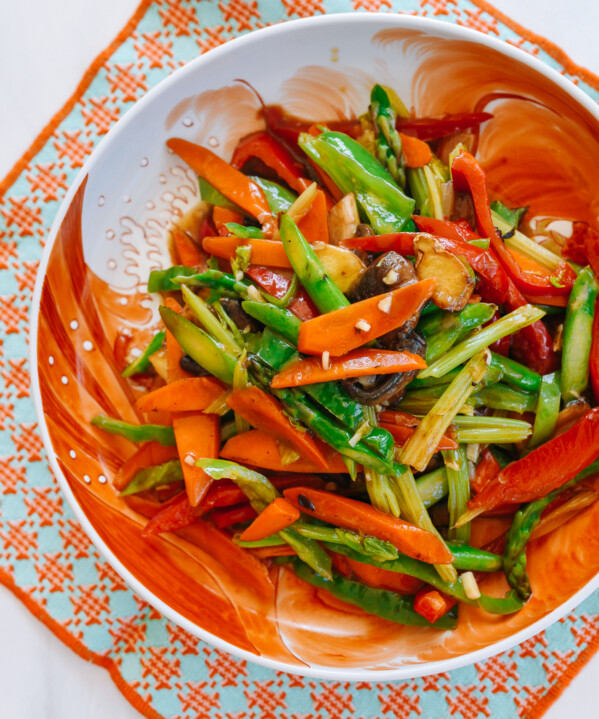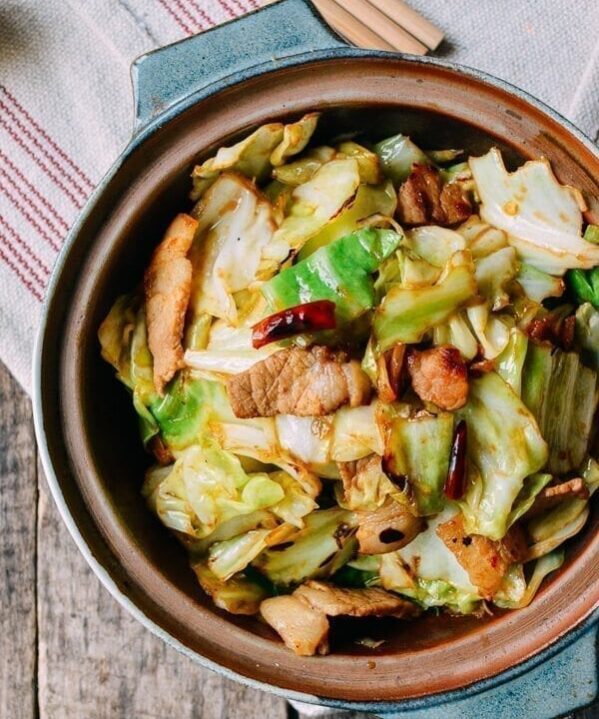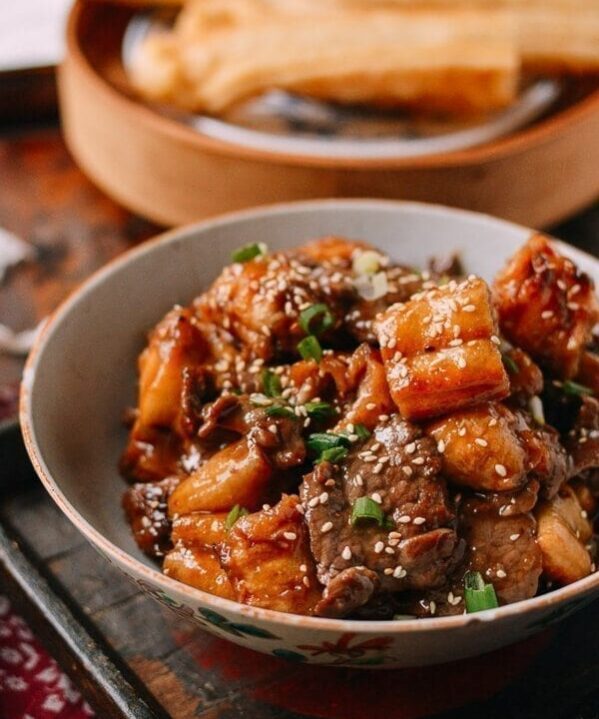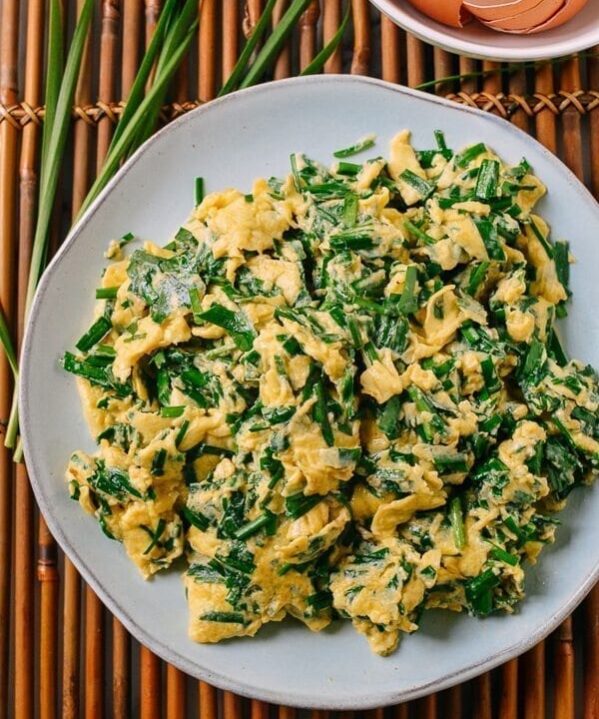Pea Tips or pea leaves are gaining popularity as more people are informed of their sweet, delicious existence and search for them on Chinese restaurant menus. We’ve already covered a recipe for these, but we wanted to do a redux version with new photos.
Pea tips are the tender leaves of a pea plant and they are one of the best stir fry vegetables and also the most vogue for the past few years. They’re available pretty much year-around at our local Chinese grocery store but like anything else, best when they are in season. If you go out to buy them, look for short stems with thick leaves (they’re rather tough when skinny and long).
You can also grab a stem and pull it apart. It’s good if it snaps easily. Some of them will have pea tendrils, which are tough so you’ll want to pick them off. But the leaves are quite tender and they have the most delightful flavor!
This vegetable’s texture is similar to spinach, but with a very refreshing, sweet flavor (without that iron-y residue that spinach has). You do need to spend a little bit of time going through them and to pick off the tougher parts, but once the prep work is done, pea leaves only take a couple of minutes to cook and serve.
Note:
- This particular vegetable requires a little more oil than you’d usually use to cook veggies but all stir fry vegetables need a liberal amount of light oil
- When cooking leafy green vegetables, do NOT cover the lid more than once, or your veggies will turn yellow.
- To get that restaurant taste, increase the salt a little bit, and cook over very high heat. These sweet tasting pea tips will balance the salt so no added sugar is needed
Stir-fried Pea Tips: Recipe Instructions
Make sure your snow pea leaves/tips are thoroughly washed and picked through for tough stems.
Heat the oil in a large wok over high heat. Add the garlic and stir for a couple of seconds before adding the pea tips.
Stir-fry for 20 seconds, keeping the vegetables constantly moving.
Add the salt, white pepper, and sesame oil.
Continue stir-frying until the pea tips are completely wilted but still vibrant green. Serve.
Pea Tips Stir-fry

Ingredients
- 1 pound snow pea leaves (450g, picked, thoroughly washed clean)
- 3-4 tablespoons vegetable oil
- 3-5 cloves garlic (finely chopped)
- 1/2 teaspoon salt (or to taste)
- 1/4 teaspoon white pepper
- 1 teaspoon sesame oil
Instructions
- Make sure your pea leaves are thoroughly washed and picked through for tough stems. Heat the oil in a large wok over high heat. Add the garlic and stir for a couple of seconds before adding the veggies.
- Stir-fry for 20 seconds, keeping the vegetables constantly moving. Add the salt, white pepper, and sesame oil. Continue stir-frying until the vegetables are completely wilted but still vibrant green. Serve.
nutrition facts
